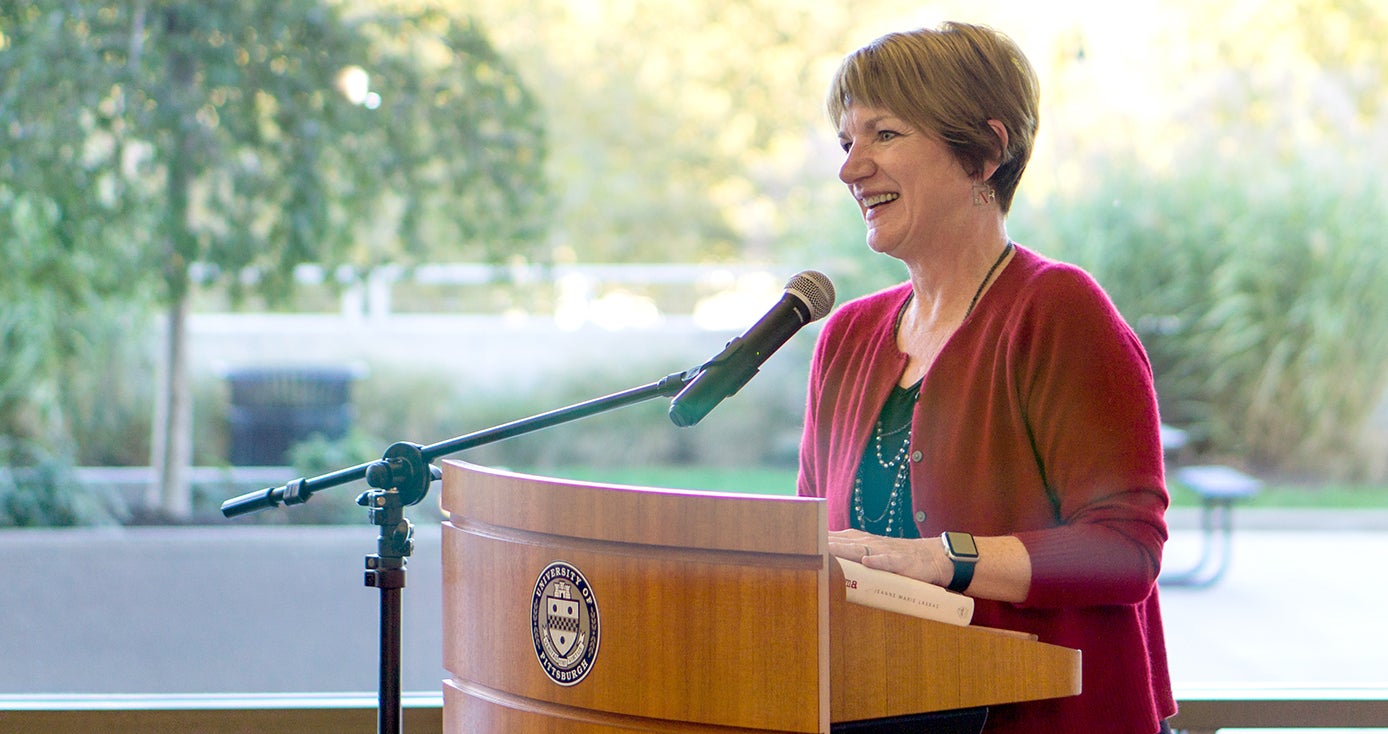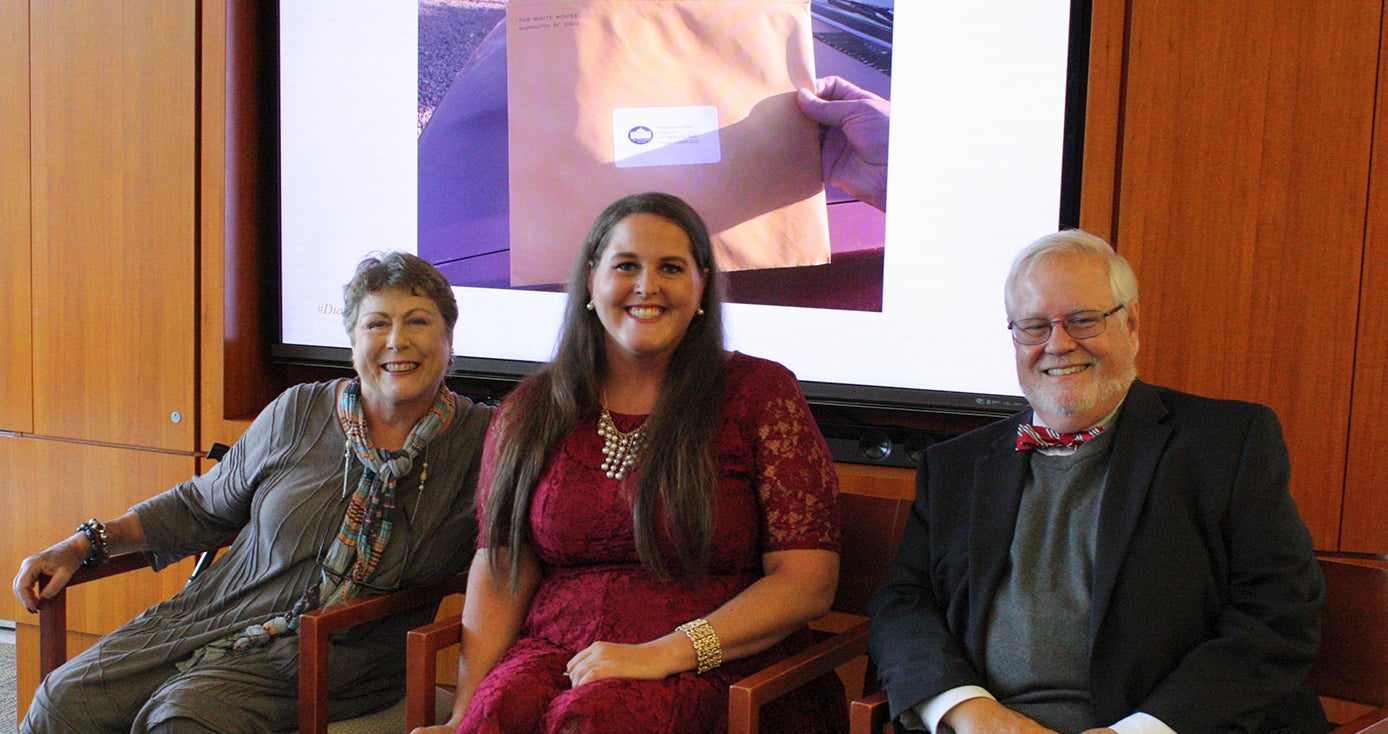
Subscribe to Pittwire Today
Get the most interesting and important stories from the University of Pittsburgh.Professor Explores Barack Obama’s Presidency, Legacy Through Letters
In 2015, a college student wrote a letter to the president of the United States. To the student’s surprise, the president replied in his own handwriting. Weeks later, he signed a bill into law, referencing her note in his public remarks as an example of why this legislation matters, how it might save lives.
Not every letter — let alone one to the president — makes this kind of impact. But each one tells a story.
Between 2008 and 2016, Barack Obama spent each night at 1600 Pennsylvania Ave. reading ten letters a day from constituents. He replied to many.
“They were not love letters,” said Jeanne Marie Laskas, a distinguished professor in the Department of English’s Writing Program. “He said, ‘I want a representative sample. I want the mood of the nation.’”
Laskas recently wrote a book about these missives titled, “To Obama: With Love, Joy, Anger, and Hope” (Penguin Random House). Interspersed with copies of letters from citizens and their replies from Obama, it’s a sort of census of eight years of correspondence between the American people and their president.
Laskas is the founding director of the Center for Creativity at Pitt and was previously director of the Master of Fine Arts (MFA) program in nonfiction. She also is the best-selling author of eight books, a contributing writer at The New York Times Magazine and a GQ correspondent.
When she first learned about the letters, late into Obama’s second term, she knew there was a story. Who writes to the president, and why?, she wondered.
“Not since my Santa Claus days would it have occurred to me to do something like that,” Laskas writes in the book.
She was also surprised to learn that Obama was the first and so far only U.S. president to engage with the mail on a daily basis. The Office of Presidential Correspondence (OPC) had been around since William McKinley, but no commander in chief interacted as intimately with the letters as Obama did.
From letters to literature
“The original idea was to go around the country and interview letter writers,” said Laskas. But after visiting the White House mail room, the story idea expanded in scope.
It was “unfiltered chaos,” she said of the OPC. “Dipping into the voices of America all at once, no order,” a team of young professionals and volunteers had a front row seat to very personal history as it unfolded. They opened 10,000 letters a day and selected ten for the president to read. They responded to thousands more and archived everything.
Laskas reported from that “little factory” in Washington through 2016. Meanwhile, Pitt research associate Rachel Wilkinson and Assistant Professor Erin Anderson hit the road to interview letter writers, collecting their personal stories.
With the budget Laskas had through a faculty research project in the English department, money paid for boots-on-the-ground reporting, factchecking, transcribing and follow up interviews. They used equipment from the Center for Creativity. Later on, more MFA students and early career Pitt faculty members came onboard to make the story a reality.
The initial result was an essay in The New York Times Magazine. “It was supposed to be just a legacy piece” about Obama, said Wilkinson (A&S ’15G), but the response was enormous when it published in January 2017. The story became a National Magazine Award finalist for feature writing — and the team had so much more material that had not yet made it to the page.
Since publishing as a full-length book, “To Obama” has garnered praise from The Atlantic, The Washington Post, The Guardian and others. Laskas invited three of the letter writers to the book launch at Pitt in September, where they told their stories to a packed house in the Hillman Library.
And there’s more to come: A podcast series featuring interviews of the letter writers Anderson and others collected along the way. New career paths in civic engagement for some of the old OPC staffers. Perhaps more letter readers, and writers, and new twists and turns.
It’s just “these surprises,” said Laskas of the letters. “They’re little. But they’re huge.”



